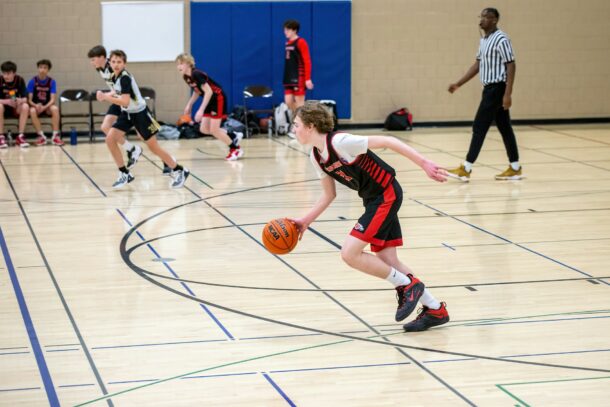Developing basketball defensive systems stands as one of the most important aspects for any coach out there. While designing offensive plays might be more fun, crafting the right defensive system might make more a difference between winning and losing. A good defense feeds directly into offense and it makes scoring that much easier. Basketball coaches implementing combination defenses can make things even more difficult for opponents.
Many coaches believe it’s better to sport a simple offense and complex defense, rather than the other way around. How a coach crafts their team’s defensive approach often dictates the very identity of the team. Also, not all players, particularly at the youth level, will have the same natural abilities on the offensive end, but most players can be taught complex defensive schemes and excel.
Basketball Combination Defenses
A basketball team that uses combination defenses employs a strategy that incorporates two different defensive systems. This normally manifests as a combination of zone defense and a man-to-man approach. The most well-known example of this approach is the Box and 1 defense. Some refer to these approaches as “junk” defenses, but when used correctly, they can really throw off the rhythm and timing of opposing offenses.
A Box and 1 takes your team’s best defender and task him with disrupting the playmaking opportunities of your opponent’s top perimeter scorer. At the same time, the additional four defenders will play a zone in the form of a box, hence “box and 1.” This combination defense can be a polarizing topic among basketball coaches. And, like other defensive schemes, this approach comes with advantages and disadvantages. The most obvious pro to this defensive approach is trying to neutralize, or at least render inefficient, your opponent’s top offensive player. One significant con of this defensive strategy arises when your team’s best perimeter defender is also your team’s best offensive player.
Another example of basketball combination defenses is the Triangle and 2. This approach uses two chasers instead of one, with the three other defenders creating a triangle zone. The two bottom defenders take the low blocks while the third member of the triangle mans the nail. Coaches can invert the triangle if more defensive pressure is needed at the elbows.
Strengths and Weaknesses of the Combo Defense
Strengths:
- Confusion – This forces the opposition to run an offense completely different to their normal playing style. Forcing the opposition to make massive changes to their game-plan is always a good thing for the defense.
- Star Players Will Get Frustrated and Tired– Imagine how frustrating and tiring it will be for their star players who are unable to get open while their teammates pass the basketball around and take shots.
- Easy to Implement – Easy to teach using man principles.
Weaknesses:
- Middle of the Zone and the mid-range jumper – The middle of a zone is always the most vulnerable position on the court for the offense to exploit. It’s imperative that your weak side players are always in the correct position to deny the pass into the middle of the zone.
- Can’t be used often against great shooting teams – If the team has patience and moves the ball they will find open shots.
Related: Basketball Team Shooting Drills
Resource:
The Coach Unplugged Podcast

Ep 1406 Office Hours and Combination Defenses
If you found this useful, don’t forget to check out additional blog posts at TeachHoops.com. Also, check out TeachHoops on Facebook, Twitter, Instagram and YouTube.






